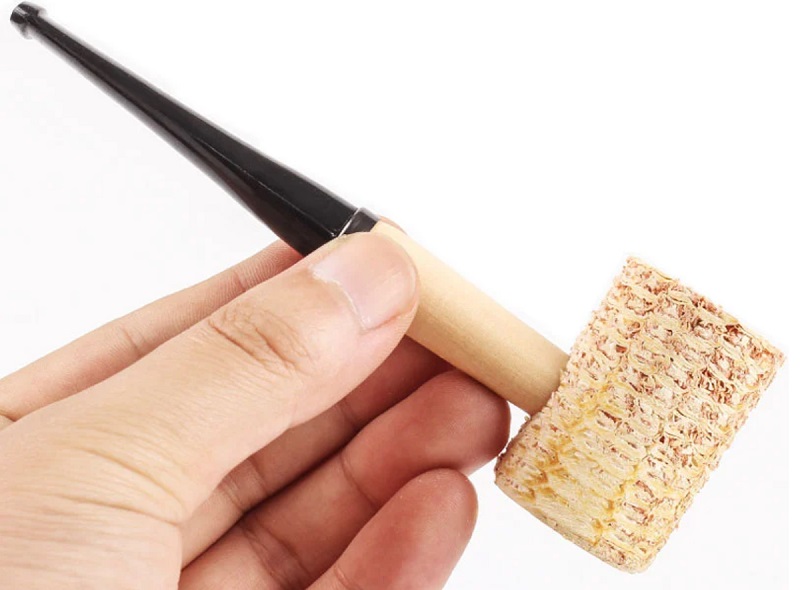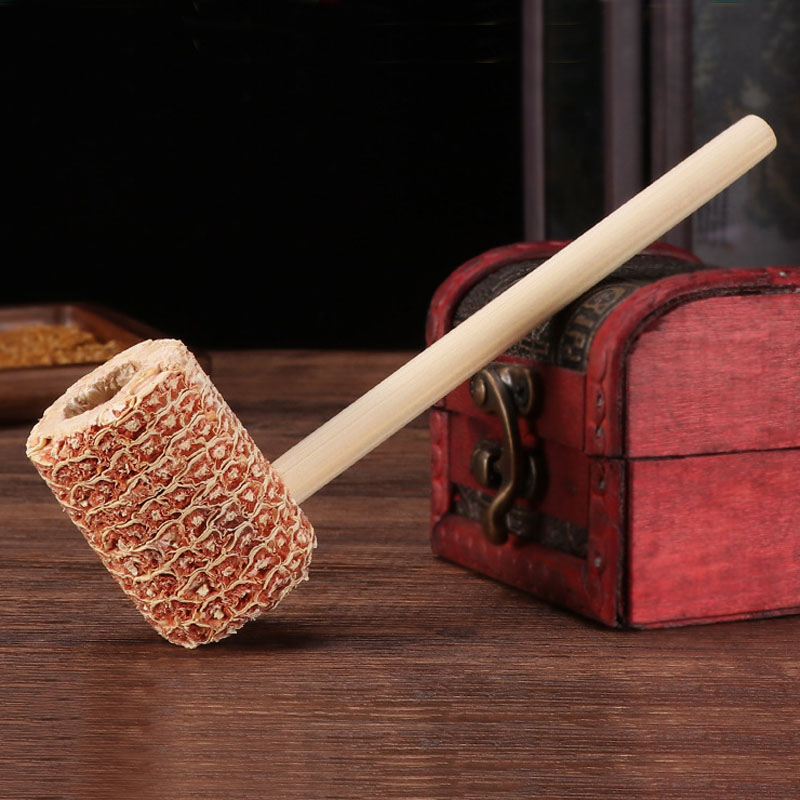How to Make a Homemade Tobacco Pipe? Follow 11 Steps

While exploring the unknown joys of making, have you ever wanted to build a distinctive tobacco pipe with your own hands?
Unlike the same finished product in the store, a homemade tobacco pipe is not only unique but also contains your creativity and passion.
It's not just a smoking tool; it's a unique symbol of your personality and taste.
Today, let's embark on a fun and challenging journey to discover how to make your very own tobacco pipe!
What's a Tobacco Pipe?

A tobacco pipe is a specialized device designed for smoking tobacco.
It consists of a mouthpiece at one end, connected to a stem, and a bowl at the other end, where tobacco—often Burley or Virginia strains—is packed and lit.
This classic tool has been used for centuries, offering a traditional and refined method of enjoying tobacco.
Tobacco pipes are crafted from materials capable of withstanding the high heat generated during smoking, such as briar wood, meerschaum, or clay.
They generally feature a larger bowl compared to other smoking devices.
Unlike many modern pipes, tobacco pipes typically do not include screens in the bowl.
Instead, they rely on a straightforward draw hole that connects the bowl to the stem.
History of Tobacco Pipe Smoking
The history of the pipe has its roots in the Native Americans, who first used the native tobacco plant for smoking, and in the 16th century, with the discovery of the New World by Christopher Columbus, tobacco and the pipe smoking habit were introduced to Europe, where it gradually became a part of the social scene.
By the 18th century, pipe designs diversified and became a symbol of fashion, and the Industrial Revolution in the 19th century drove the mechanization of pipe production.
Despite the popularity of cigarettes in the 20th century, pipe smoking remains a traditional leisure activity with a unique appeal and a loyal following.
Types of Tobacco Pipes
First and foremost, tobacco pipes are distinguished into straight, half-bent, and bent.
From these 3 categories come a large number of specific tobacco pipe shapes, each with its own personality and smoking experience.
There are 12 classic tobacco pipe shapes: Billiard, Bent, Apple, Pot, Canadian, Dublin, Woodstock, Oval, Lovat, Prince, Bulldog, and Rhodesian.
You can make your own favorite shape according to your needs!
Materials Needed to Make a Homemade Pipe?
Making a homemade tobacco pipe can be a rewarding project. Here's a list of materials you might need and a brief overview of the steps to create one:
Base Material for the Bowl
- Wood: Briar, oak, cherry (for a traditional feel)
- Fruits or Vegetables: Apple, gourd (for a unique, organic option)
- Clay or Ceramic: For a kiln-fired pipe (requires firing process)
- Bamboo: For a natural and biodegradable pipe
Stem Material
- Glass or Acrylic Tubing: For a clear, durable stem
- Metal: Brass, stainless steel (for strength and style)
- Additional Wood or Bamboo: To match or complement the bowl material
Attachments and Fittings
- Metal Bands or Connectors: To secure parts together
- Screens or Filters: For the bowl to ensure proper airflow and tobacco separation
Tools
- Carving Tools or a Dremel: For shaping the base material
- Drill and Bits: To create holes for the stem and airway
- Sandpaper and Files: For smoothing rough edges and surfaces
- Glass Cutters: If using glass for the stem
- Kiln: For firing clay pipes (if making a ceramic pipe)
Adhesives and Sealants
- Epoxy or Super Glue: For bonding different materials
- Heat-Resistant Sealant: To ensure the pipe is airtight and durable
Decorative Materials (Optional)
- Paints: For wood or ceramic to add color or design
- Engraving Tools: For personalizing the pipe with patterns or initials
Safety Equipment
- Respirator Mask: To protect against dust and fumes
- Safety Goggles: To protect eyes from flying debris
- Gloves: To protect hands from sharp tools and materials
How to make a Homemade Tobacco Pipe?

Certainly! Crafting a homemade tobacco pipe is a detailed process, and organizing the steps logically can make it easier to follow.
Here's a revised, more structured approach to making a homemade pipe:
Step 1: Plan Your Design
- Sketch: Begin by sketching the design of your pipe, including the bowl, stem, and any decorative elements you wish to incorporate.
Step 2: Select and Prepare Your Materials
- Choose the Bowl Material: Decide between wood, clay, fruit/vegetable, or other materials.
- Choose the Stem Material: Select a material for the stem, such as bamboo, glass tubing, or metal.
Step 3: Create the Bowl
- Wood: Carve the wood into the desired bowl shape, ensuring it's deep enough to hold the tobacco.
- Fruit/Vegetable: Hollow out the fruit or vegetable, removing the core and making the walls thick enough.
- Clay: Sculpt the bowl from clay, let it dry, and fire it in a kiln if necessary.
Step 4: Shape the Stem
- Cut and Shape: Cut your chosen material to the appropriate length and shape it into a stem that will fit the bowl.
Step 5: Attach the Stem to the Bowl
- Use Fittings or Adhesives: Secure the stem to the bowl using metal fittings or a strong adhesive that can withstand heat and is safe for smoking.
Step 6: Smooth and Refine
- Sand and File: Smooth the exterior of the pipe and the newly attached stem to remove rough edges and achieve a comfortable grip.
Step 7: Drill Necessary Holes
- Airway and Mouthpiece: Drill an airway hole in the bowl and a mouthpiece hole in the stem, ensuring proper alignment and size.
Step 8: Apply Heat Treatment (if needed)
- Hardening: For wooden pipes, apply a heat treatment to harden the wood and increase its durability.
9: Add Decorative Finishes
- Paint or Engraving: Apply any desired decorative finishes, such as paint or engravings, to personalize your pipe.
Step 10: Conduct Safety Checks
- Airtightness and Security: Check for air leaks and ensure all parts are securely attached and the pipe is airtight.
Step 11: Test the Functionality
- Smoke Test: Before the first use, test the pipe to make sure it smokes well and there are no leaks or blockages.
Safety Precautions
Always work in a well-ventilated area to avoid inhaling harmful fumes from adhesives or paints.
Wear protective gear such as gloves, goggles, and a mask when necessary.
Ensure all materials are safe for smoking and can handle the heat without releasing toxins.
By following these steps in a logical sequence, you can create a homemade tobacco pipe that is both functional and unique.
Enjoy the process and take pride in your handcrafted creation!
Conclusion
The tobacco pipe offers a distinct smoking experience.
Now that you have all the knowledge and inspiration you need, it's time to transform your vision into reality.
Don't let another day pass without beginning your pipe-making journey.
So, gather your materials, put on your safety gear, and let your creativity take the lead. Start making today and savor the joy of creation!
Learn more about this article:How to Make a Homemade Pipe? Prepare for the Unexpected
